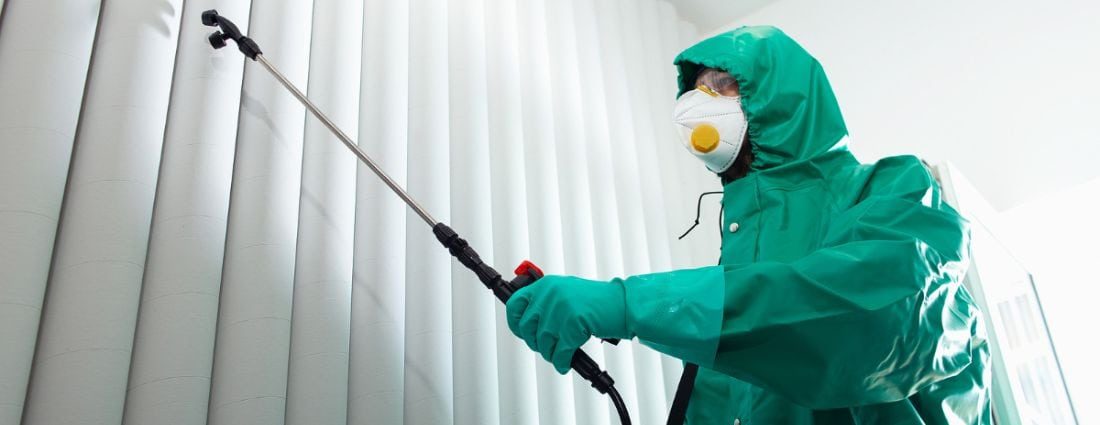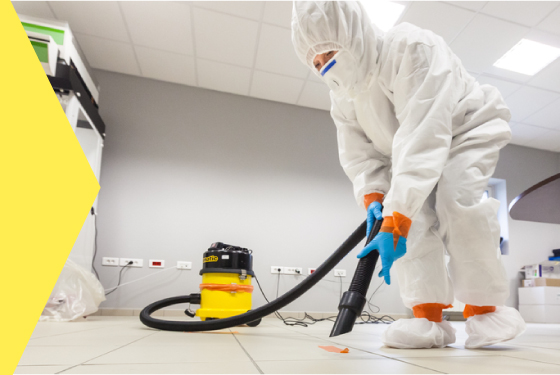Hoarder Cleanup Providers: Fixing Order and Security in your house
Hoarder Cleanup Providers: Fixing Order and Security in your house
Blog Article
Specialist Biohazard Cleansing and Purification for Blood, Bodily Fluids, and Hazardous Products
In the world of biohazard cleaning and decontamination for blood, physical liquids, and harmful materials, precision and knowledge are critical. The potential health threats linked with direct exposure to biohazards underscore the critical demand for careful handling and complete cleanup. Specialized training equips experts with the understanding and skills essential to attend to these hazardous scenarios successfully. However, it is not just regarding tidying up; the relevance of using appropriate decontamination strategies can not be overemphasized. As we navigate the intricate landscape of biohazard clean-up, understanding the subtleties of regulations, conformity, and the customized tools at play becomes necessary in guaranteeing a comprehensive and risk-free decontamination process.
Health Threats of Biohazard Exposure
Direct exposure to biohazards postures significant wellness threats that can lead to extreme effects for neighborhoods and individuals alike. Biohazards include a vast array of organic compounds, consisting of blood, bodily liquids, mold, bacteria, viruses, and other potentially contagious materials. When individuals enter contact with these biohazards, whether through accidents, improper handling, or environmental exposure, they encounter the danger of contracting major health problems or conditions.
Among the main health and wellness dangers connected with biohazard exposure is the transmission of infectious diseases. Bloodborne virus such as HIV, liver disease B and C, and various bacteria can be existing in biohazardous materials, positioning a direct hazard to human wellness. Inhaling air-borne biohazards like mold and mildew spores or coming into contact with infected surfaces can also bring about respiratory system problems, allergies, and various other negative health and wellness effects.
Furthermore, biohazard direct exposure can have long-lasting health implications, with some conditions materializing years after the preliminary contact (Blood Cleanup). Consequently, it is critical to focus on proper biohazard cleansing and decontamination to minimize these health and wellness risks and make certain the security of communities and people

Specialized Training for Biohazard Clean-up
When it pertains to managing biohazard cleaning efficiently and safely, specialized training plays a basic role in guaranteeing correct purification procedures are adhered to. Biohazard cleanup needs certain understanding and abilities to properly reduce risks connected with bloodborne pathogens, bodily fluids, and dangerous materials. Professionals learnt biohazard cleanup undergo extensive direction on how to safely handle, eliminate, and dispose of biohazardous materials to stop contamination and direct exposure.
Specialized training for biohazard cleaning covers an array of vital topics, including correct personal safety equipment (PPE) usage, bloodborne pathogen awareness, decontamination techniques, and hazardous waste disposal protocols. Individuals learnt biohazard cleaning are outfitted with the essential competence to examine contamination levels, identify potential hazards, and implement ideal cleaning treatments in compliance with regulatory standards.
Continual training and education and learning are vital in the field of biohazard cleanup to remain upgraded on the most up to date decontamination technologies, safety and security methods, and guidelines. By purchasing specialized training, biohazard cleaning specialists can efficiently reply to emergency situation clean-up situations and guard both public wellness and the atmosphere.
Importance of Correct Purification Methods
Utilizing correct decontamination techniques is critical in biohazard clean-up to effectively remove dangerous products and reduce health threats. Effective purification not only makes certain the removal of like this noticeable traces of blood, bodily liquids, and other biohazards yet also targets unseen microorganisms that might position significant health hazards if not appropriately eliminated. By adhering to strict purification methods, trained experts can considerably minimize the risk of exposure to unsafe microorganisms, viruses, and microorganisms that click this link could result in diseases or infections.
Appropriate purification strategies involve making use of specific tools and anti-bacterials that are specifically created to counteract biohazards effectively. Extensive cleansing and sanitation of infected areas are vital to stop the spread of pathogens and ensure a safe atmosphere for passengers. In addition, the proper disposal of biohazardous waste following decontamination procedures is important in stopping contamination of various other surface areas or people.

Tools and Tools for Safe Cleanup
The proper equipment and tools play an important role in ensuring the secure and reliable cleaning of biohazardous materials. When dealing with blood, bodily fluids, or unsafe products, biohazard cleaning specialists count on specialized equipment to lessen exposure risks and completely decontaminate the damaged area. Personal safety equipment (PPE) such as handwear covers, goggles, coveralls, and masks are important to secure against straight call with possibly transmittable products. Additionally, biohazard cleansing packages having disinfectants, absorptive materials, and biohazard bags are used to securely dispose and contain of infected products. Blood Cleanup.
Advanced cleaning tools like hospital-grade anti-bacterials, HEPA-filtered vacuum cleaners, and fogging devices are utilized to disinfect surface areas and remove biohazards efficiently. Specialized devices such as sharps containers and biohazard garbage disposal containers are utilized to safely manage sharp items and biohazardous waste products. By making use of the appropriate equipment and tools, biohazard cleaning professionals can guarantee a detailed cleaning procedure that focuses on safety and minimizes health risks for both workers and residents of the afflicted area.
Laws and Compliance in Biohazard Cleaning
Proper adherence to policies and compliance standards is critical in biohazard cleaning to guarantee the safety of both personnel and the environment. Government firms such as OSHA (Occupational Safety And Security and Wellness Management) and the EPA (Environmental Defense Company) have established blood cleanup chemicals specific standards for biohazard cleaning treatments to reduce health risks and ecological contamination. These laws cover a series of elements including the handling, transport, and disposal of biohazardous products, in addition to the required training and safety tools required for personnel entailed in the clean-up process.
Biohazard cleansing firms need to stay current with these guidelines to guarantee that their procedures satisfy the required safety and security requirements. Failure to follow these guidelines can result in extreme repercussions, including penalties, legal activity, and threatening the health of people and the atmosphere. By adhering to rigid policies and conformity steps, biohazard cleansing business can properly alleviate risks and make sure a risk-free and thorough clean-up process for all celebrations involved.
Final Thought
In conclusion, biohazard cleansing and purification require customized training, proper methods, and adherence to regulations. Exposure to blood, physical fluids, and dangerous products positions considerable health and wellness threats, making it important to make use of the best devices and devices for secure cleanup. By complying with rigorous protocols and guidelines, professionals can successfully alleviate the dangers connected with biohazard direct exposure and make sure the safety and security of both themselves and others.
As we browse the intricate landscape of biohazard cleaning, understanding the nuances of guidelines, compliance, and the specific devices at play comes to be critical in making certain a complete and safe decontamination procedure. (Blood Cleanup)
When it comes to handling biohazard cleaning successfully and safely, specialized training plays a basic duty in guaranteeing proper decontamination treatments are adhered to.Utilizing proper purification strategies is crucial in biohazard cleaning to successfully decrease and remove dangerous products health dangers. Additionally, biohazard cleansing kits consisting of anti-bacterials, absorbent products, and biohazard bags are utilized to safely get rid of and consist of of infected products.
Government companies such as OSHA (Occupational Security and Wellness Administration) and the EPA (Environmental Defense Firm) have established specific guidelines for biohazard cleanup procedures to lessen health risks and environmental contamination.
Report this page